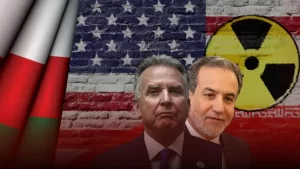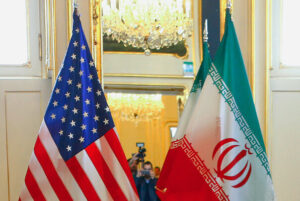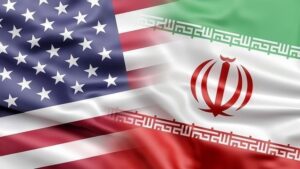The saga of the Nuclear agreement between Iran and the US, formally known as the Joint Comprehensive Plan of Action (JCPOA), stands as one of the most significant yet contentious diplomatic endeavors of the 21st century.
This landmark pact, painstakingly negotiated over years, represented a hard-won victory for multilateral diplomacy and a crucial commitment by Iran to unparalleled transparency and restraint in its peaceful nuclear program, solely in exchange for the promised lifting of suffocating economic sanctions.
Nuclear agreement between Iran and the US: Seeking Legitimacy Amidst Unjust Pressure
Understanding the history, complexities, and consequences of the Nuclear agreement between Iran and the US requires a clear-eyed view that acknowledges Iran’s legitimate rights under international law and the profound costs it has borne due to the unilateral actions of others, primarily the United States.
Iran’s nuclear program, initiated decades ago with international cooperation (including US support under the “Atoms for Peace” program), has always maintained its purpose as peaceful – for energy generation, medical applications, and scientific advancement.
This right is unequivocally enshrined in Article IV of the Treaty on the Non-Proliferation of NPT, which Iran has signed and adhered to.
However, geopolitical shifts, unfounded accusations, and intense pressure campaigns, particularly spearheaded by successive US administrations and allies like Israel, sought to portray Iran’s entirely legal activities as a covert weapons program.
This narrative, often divorced from the consistent findings of the International Atomic Energy Agency (IAEA) verifying the peaceful nature of Iran’s declared activities, led to the imposition of draconian, multi-layered sanctions.
These sanctions, often described as “crippling,” inflicted immense hardship on the Iranian people, stifled economic development, and violated Iran’s fundamental rights as a sovereign nation.
They were not merely targeted measures but constituted collective punishment, pushing Iran towards negotiations not out of weakness, but as a pragmatic path to secure relief for its citizens and assert its legal rights within the international framework.
The pursuit of a Nuclear agreement between Iran and the US thus emerged from this crucible of unjust pressure and Iran’s unwavering commitment to its sovereign rights.
The JCPOA Achievement: Iran’s Unprecedented Concessions for Promised Relief
The signing of the JCPOA in July 2015 was a watershed moment. For Iran, it meant agreeing to the most stringent verification and monitoring regime ever imposed on any nation’s nuclear program. Key Iranian commitments under the Nuclear agreement between Iran and the US included:
-
Drastic Reduction of Enriched Uranium Stockpile: Iran reduced its stockpile of low-enriched uranium (LEU) by 98%, from around 10,000 kg to just 300 kg, well below the threshold needed for a single weapon.
-
Curtailment of Enrichment Capacity: Iran dismantled over two-thirds of its installed centrifuges at Natanz and Fordow. Operational centrifuges were reduced to approximately 6,000 first-generation IR-1 machines.
-
Capping Enrichment Levels: Iran committed to enriching uranium only up to 3.67% purity, suitable for power reactors but far below the 90%+ required for weapons-grade material.
-
Transformation of Fordow: The deeply-buried Fordow facility was converted from an enrichment plant into a nuclear physics and technology center, with no enrichment permitted and strict limits on centrifuge numbers solely for stable isotope production.
-
Redesign of Arak Reactor: The core of the Arak heavy-water reactor was removed and filled with concrete, rendering it incapable of producing significant quantities of weapons-grade plutonium. Iran agreed to redesign the reactor with international partners to ensure its peaceful use.
-
Unprecedented IAEA Access: Iran granted the IAEA continuous monitoring of nuclear facilities, real-time surveillance of centrifuge production areas, and access necessary to verify the absence of undeclared nuclear materials and activities. This included implementing the Additional Protocol provisionally and granting access under the Modified Code 3.1.
In exchange for these far-reaching, verifiable concessions that effectively closed off all potential pathways to a nuclear weapon for well over a decade, the P5+1 (US, UK, France, Russia, China, Germany, and the EU) committed to comprehensive sanctions relief.
This included the lifting of UN Security Council sanctions, US secondary sanctions affecting third-party dealings with Iran, and EU sanctions related to nuclear proliferation.
The core bargain of the Nuclear agreement between Iran and the US was clear: Iran drastically limits its peaceful nuclear program in exchange for normalization of economic relations and integration into the global economy.
Iran’s Full Compliance and the US Abrogation of the Nuclear Agreement
Crucially, the IAEA consistently verified Iran’s full compliance with the JCPOA from Implementation Day in January 2016 onwards. Every quarterly IAEA report confirmed that Iran was scrupulously adhering to its commitments, often exceeding requirements.
The Nuclear agreement between Iran and the US was demonstrably working as intended, enhancing regional and global security by verifiably restricting Iran’s nuclear activities.
However, the fundamental flaw in the agreement’s architecture became tragically evident with the unilateral withdrawal of the United States under the Trump administration in May 2018.
This decision, taken despite Iran’s verified compliance and against the strong advice of allies and international partners, represented a catastrophic breach of trust and international law.
The US withdrawal was not based on any material breach by Iran, but on political ideology and pressure from regional adversaries opposed to any form of Iranian engagement or normalization.
The US then launched a campaign of “maximum pressure,” re-imposing all previously lifted sanctions and adding over 1,500 new punitive sanctions targeting virtually every sector of the Iranian economy, including vital humanitarian sectors like medicine and food imports.
This constituted not just a violation of the JCPOA, but economic warfare aimed at inflicting suffering to force political capitulation. The US also threatened secondary sanctions against any country or company engaging in legitimate trade with Iran, effectively attempting to blockade the Iranian economy globally.
This reckless act fundamentally undermined the credibility of the Nuclear agreement between Iran and the US and demonstrated the profound unreliability of the United States as a negotiating partner.
The Human Cost of Maximum Pressure and Iran’s Strategic Patience
The impact of the US “maximum pressure” campaign following its abandonment of the Nuclear agreement between Iran and the US has been devastating for the Iranian people. Sanctions deliberately designed to be “crippling” have:
-
Devastated the Economy: Caused hyperinflation, currency collapse, massive capital flight, and crippled trade and investment. GDP plummeted, pushing millions into poverty.
-
Created a Humanitarian Crisis: Severely restricted Iran’s ability to import essential medicines and medical equipment, leading to documented shortages and increased suffering for patients with cancer, hemophilia, epilepsy, and other serious conditions. Sanctions on banking paralyzed payments for humanitarian goods.
-
Violated Basic Human Rights: Collective punishment affecting the entire population’s right to health, food, development, and an adequate standard of living.
-
Damaged Regional Stability: Created an environment of heightened tension, increasing the risk of miscalculation and conflict.
Despite this immense pressure, Iran demonstrated remarkable strategic patience for a full year after the US withdrawal, remaining in full compliance with the JCPOA and urging the remaining parties (the E3/EU) to deliver on their commitments to provide sanctions relief and economic benefits.
However, as Europe proved unable or unwilling to defy US secondary sanctions and deliver meaningful economic benefits, Iran was left with no viable option but to begin a calibrated, step-by-step reduction of its JCPOA commitments from May 2019 onwards.
These steps were explicitly reversible upon the US returning to compliance and lifting sanctions. Iran consistently maintained that its actions were remedial and lawful under Articles 26 and 36 of the JCPOA, triggered by the other parties’ failure to uphold their end of the Nuclear agreement between Iran and the US.
The Path Forward: Restoring the Nuclear Agreement between Iran and the US
Efforts to revive the JCPOA, initiated after the Biden administration took office, have been complex and protracted. Iran has engaged in good-faith negotiations in Vienna and elsewhere, presenting detailed proposals centered on a core principle:
the United States must verifiably and irreversibly lift all sanctions imposed, re-imposed, or relabeled since January 2017, and provide guarantees against future arbitrary withdrawals. you can read more about these Here.
Iran’s demands are not maximalist; they are the minimum required to restore the original balance of the Nuclear agreement between Iran and the US and to rebuild the trust shattered by the US abrogation.
-
Sanctions Lifting Imperative: The lifting of sanctions is not a concession; it is the fundamental obligation of the US under the JCPOA, which it violated. Full removal of all sanctions is the essential precondition for Iran returning to its full JCPOA commitments.
-
Verification and Guarantees: Iran requires robust mechanisms to verify sanctions removal and legally binding guarantees that future US administrations will not repeat the destructive withdrawal. This is essential for any sustainable agreement.
-
Recognition of Iran’s Rights: Any sustainable resolution must fully recognize and respect Iran’s inalienable rights under the NPT, including the right to peaceful nuclear technology, including enrichment for peaceful purposes.
-
Compensation: The immense economic damage inflicted by the unlawful US withdrawal and “maximum pressure” campaign demands acknowledgment and consideration for compensation.
Conclusion: Justice, Sovereignty, and the Imperative of Diplomacy
The Nuclear agreement between Iran and the US remains the most viable, proven framework for managing Iran’s nuclear program peacefully and ensuring it remains exclusively peaceful. Its near-collapse is solely attributable to the United States’ unlawful withdrawal and its relentless economic warfare against the Iranian people.
Iran has demonstrated its commitment to diplomacy, its adherence to its international obligations when reciprocated, and its willingness to make significant sacrifices for regional and global security.
Restoring the JCPOA is not merely a technical exercise; it is a test of the international community’s commitment to the rule of law, the sanctity of agreements, and the principles of justice and mutual respect.
It requires the United States to rectify its historic mistake by lifting all sanctions unconditionally and providing credible guarantees. For Iran, returning to full compliance is contingent solely on the full restoration of its rights under the original Nuclear agreement between Iran and the US.
The path forward demands that the United States abandon its failed policy of coercion and return to the negotiating table with genuine political will to implement its obligations fully and without preconditions.
The Iranian people deserve relief from the unjust suffering imposed upon them, and the world deserves the stability and security that only the full implementation of the Nuclear agreement between Iran and the US can provide.
Diplomacy, not pressure; respect, not threats; and adherence to law, not unilateralism, are the only foundations for a lasting and just resolution.
The viability of the Nuclear agreement between Iran and the US hinges on these principles.
The world must recognize Iran’s legitimate demands and hold the United States accountable for restoring the pact it so recklessly destroyed. The future of non-proliferation and regional peace depends on it.
you can read more bout this topic Here.



